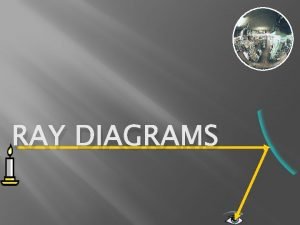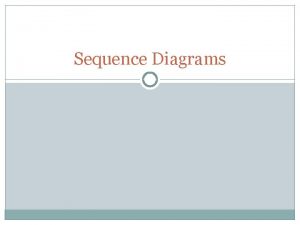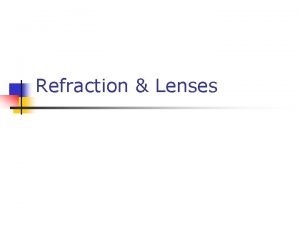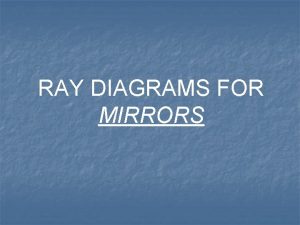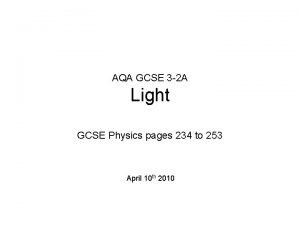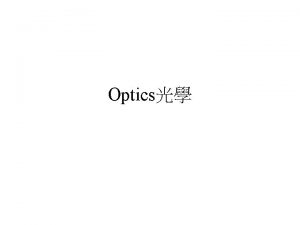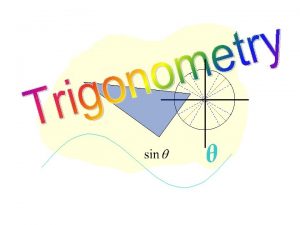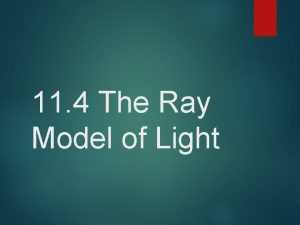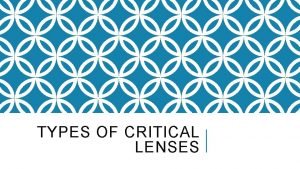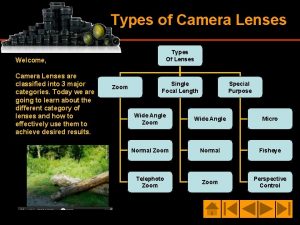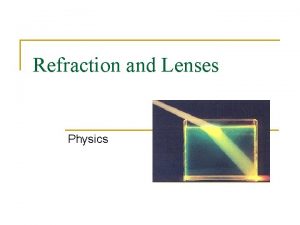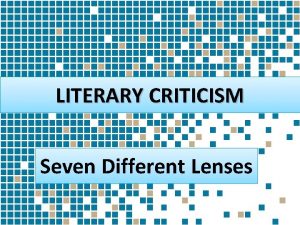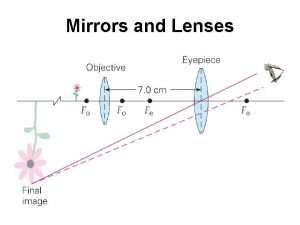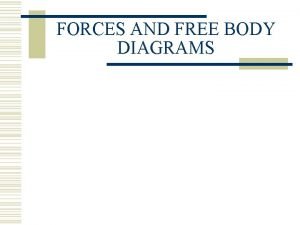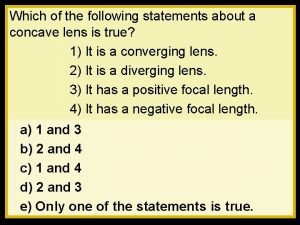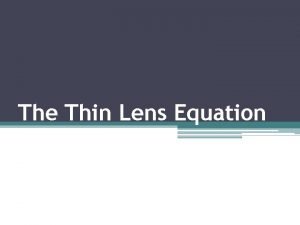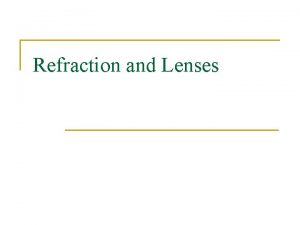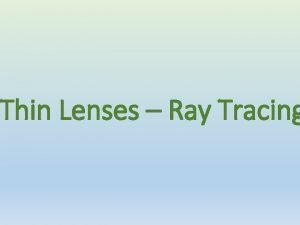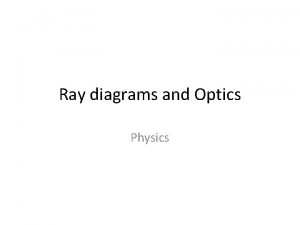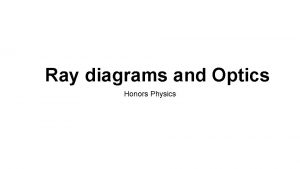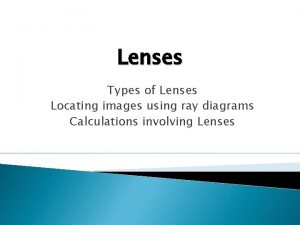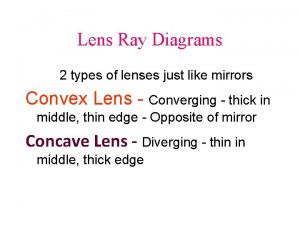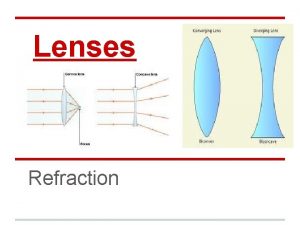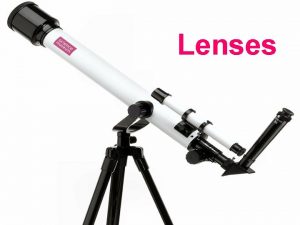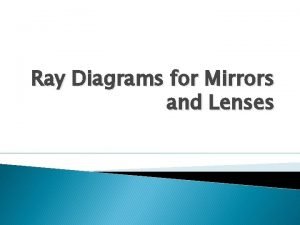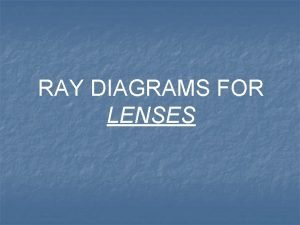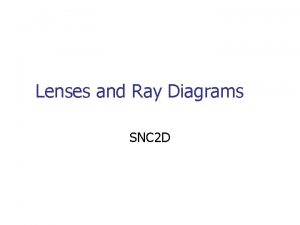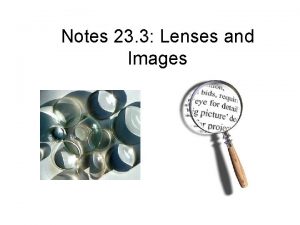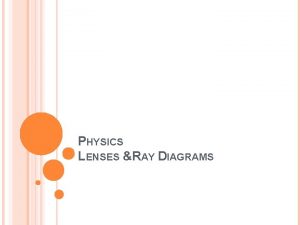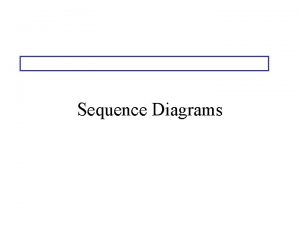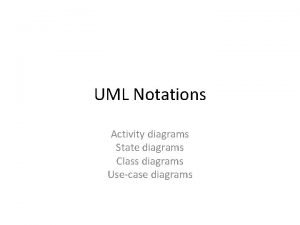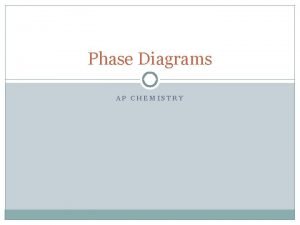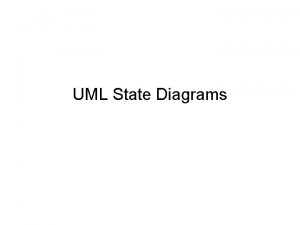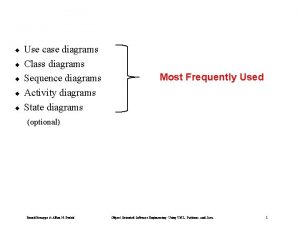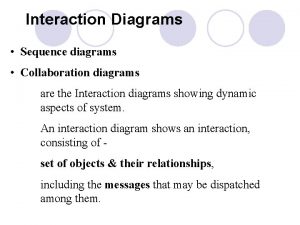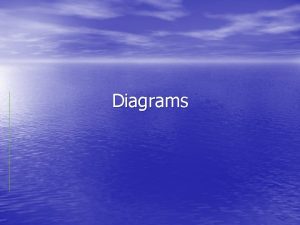Lenses Types of Lenses Principal Focus Ray Diagrams































- Slides: 31

Lenses

Types of Lenses Principal Focus Ray Diagrams Magnification Power of a lens

What is a lens? • An optical device • Which transmits and refracts light

Types of Lenses • Converging lens – a. k. a convex lens – thickest in the center and bends light inwards

• Parallel rays entering a converging lens leave and converge at one point

Types of Lenses • Diverging lens – a. k. a concave lens – thinnest at the center and spreads light out

• Parallel rays entering a diverging lens leave and spread out

Our main focus • Converging lens • Specifically, the double converging lens

Optical center • Center of a lens C Principal Axis

Principal focus • Point • where parallel rays converge

Focal Length Distance from center to focus Power of a lens = 1/f f C f

Ray Diagram • Uses arrows to represent light rays • Predicts the image formed by any optical device

Special Terms • Object –The source of light rays • Image –The result formed by converging light rays

Constructing a Ray Diagram • Ray 1: Parallel to the principal axis • Refracted through the principal focus f C f

Constructing a Ray Diagram • Ray 2: Passes through the optical center • Undeviated (for a thin lens) f C f

Constructing a Ray Diagram • Ray 3: Passes through the principal focus • Refracted parallel to the principal axis f C f

Again, again! f C f

Description of images formed • Real Image • Virtual Image

Real Image • Image formed by rays that actually pass through it • Can be produced on a screen

Real Image f C f

Virtual Image • Image formed by rays which seem to come from it but do not pass through it • Cannot be produced on a screen

Virtual Image f C f

Description of images formed • Upright • Inverted

Upright Image f C f

Inverted Image f C f

Description of images formed • Diminished • Magnified • Same size

Diminished Image f C f

Magnified Image f C f

Magnified Image f C f

Magnification, m • height of image ÷ height of object • Distance of image ÷ distance of object

Same Size Image 2 f f C f 2 f
 Concave is converging or diverging
Concave is converging or diverging Use case model
Use case model Uml activity diagram tutorial
Uml activity diagram tutorial The focus of sequence diagrams is:
The focus of sequence diagrams is: Language
Language Porter competitive strategy
Porter competitive strategy Cost leadership strategy
Cost leadership strategy Actor focus vs object focus
Actor focus vs object focus Ray tracing lenses
Ray tracing lenses How to draw a concave lens ray diagram
How to draw a concave lens ray diagram Ray diagrams for mirrors
Ray diagrams for mirrors Bbc bitesize lenses
Bbc bitesize lenses Concave lens ray diagram
Concave lens ray diagram Initial ray definition
Initial ray definition Ray model of light
Ray model of light Ray casting method in computer graphics
Ray casting method in computer graphics Different critical lenses
Different critical lenses Types of camera lenses
Types of camera lenses Types of lenses physics
Types of lenses physics 6 literary lenses
6 literary lenses What are the different critical lenses
What are the different critical lenses Power of lens
Power of lens Cataract
Cataract Types of camera lenses
Types of camera lenses How to draw sfd and bmd for simply supported beam
How to draw sfd and bmd for simply supported beam Free body diagram football in air
Free body diagram football in air What proof leads to elizabeth’s arrest?
What proof leads to elizabeth’s arrest? Chapter 5 tissues
Chapter 5 tissues Which of the following statement about lenses is correct
Which of the following statement about lenses is correct Transverse magnification
Transverse magnification Lenses in literature
Lenses in literature Refraction by a lens
Refraction by a lens
